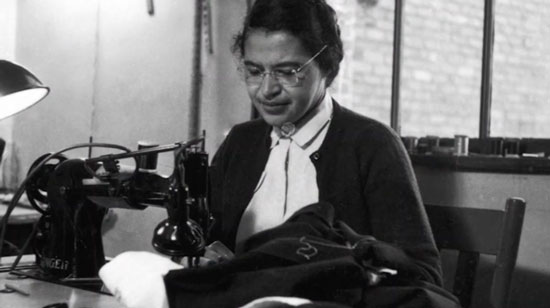Teach This Poem, though developed with a classroom in mind, can be easily adapted for remote learning, hybrid learning models, or in-person classes. Please see our suggestions for how to adapt this lesson for remote or blended learning. We have also noted suggestions when applicable and will continue to add to these suggestions online.
The following activities and questions are designed to help your students use their noticing skills to move through the poem and develop their thinking skills so they understand its meaning with confidence, using what they’ve noticed as evidence for their interpretations. Read more about the framework upon which these activities are based.
-
Warm-up: (free-write) Who are some important people and trailblazers in history? Why? Share with a partner. How many of the people you wrote or shared about are women?
-
Before Reading the Poem: Watch this video about Rosa Parks. How was Rosa Parks a trailblazer? Can you think of anyone alive today that you would call a trailblazer? Why?
-
Reading the Poem: Silently read the poem “Flora numérica/ Numeric Flora” by Mara Pastor, translated by María José Giménez. What do you notice about the poem? Note any words or phrases that stand out to you or any questions you might have.
-
Listening to the Poem: Enlist two volunteers and listen as the poem is read aloud twice, and write down any additional words and phrases that stand out to you. Or, you can watch a video of the poet reading both versions of the poem.
-
Small Group Discussion: Share what you noticed about the poem with a small group. How does the poem connect to the resource and discussion from the beginning of class? What do you think of the title?
-
Whole Class Discussion: What imagery in the poem stands out to you? Why? What do you make of the final stanza: “There is residue of the Big Bang in roses, / residue of radiation, there are fewer bees / on the planet pollinating those roses, there are fewer Rosas?”
-
Extension for Grades 7–8: In honor of Women’s History Month, read and learn more about women poets. Who would you add to this list? Use this search tool to find more poets. Share your poet’s work and some interesting facts about them with your class. (Teachers, you may wish to preview the list of poets for your individual classes. Additionally, to extend your celebration of women poets, you could ask one student to share each day.)
-
Extension for Grades 9–12: (Teachers, learn more about Dear Poet 2024, a project in which your students can write letters to Mara Pastor or other poets.) What did this poem make you think about, and what questions would you ask Mara Pastor? What connections can you make to your own life and experiences? Write a letter about your reflections and questions. Then, submit your letter to Dear Poet 2024.
Every National Poetry Month, we present Dear Poet, a multimedia project that invites young people in grades five through twelve to write letters in response to poems written and read by award-winning poets. Submissions for the 2024 Dear Poet project are now open until April 22. Invite your students to choose from nine videos and submit their letters, or you may submit your students’ letters. Selected letters will receive a reply from the poet and be published in a booklet on Poets.org. Teachers can also use Spark lesson plans on voice and exploring connections from 826 National.
Translation: the art of transferring a poem’s meaning from one language to another. Read more.

